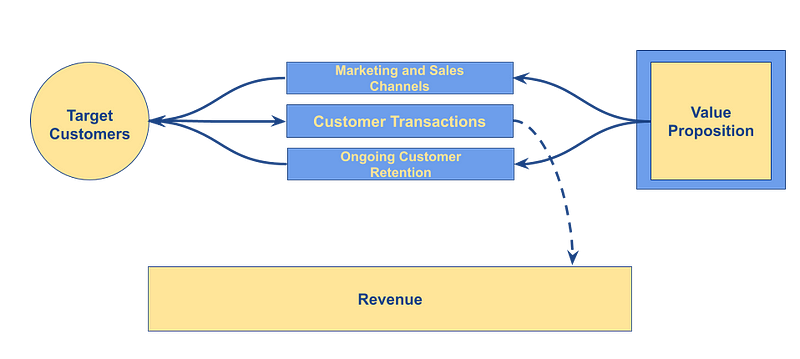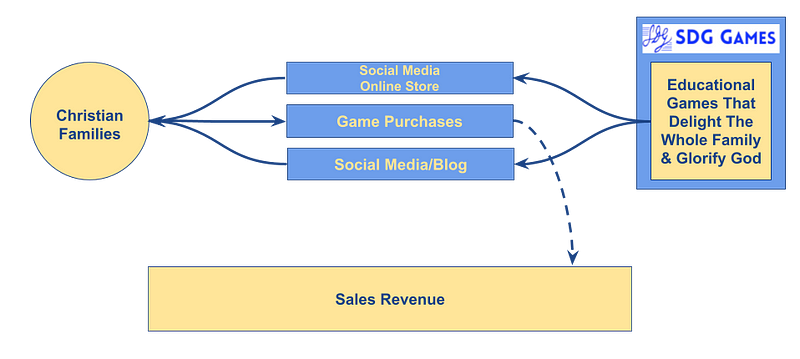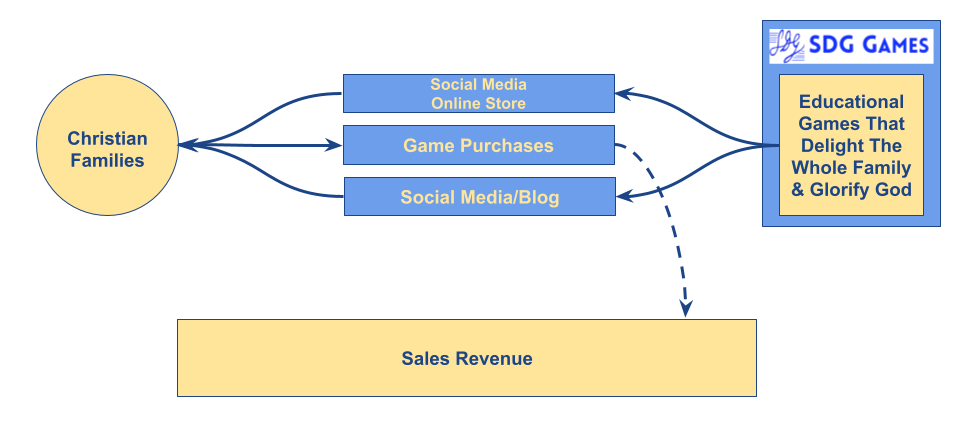One of the most common questions asked of a startup is “what is your business model?” In most cases, I think what people really want to know is, what is your revenue model — how do you make money?
A common definition of a business model is “how a business creates value for its customers and captures value from its customers.” It is helpful to break this definition into its two parts. A company’s operating model describes how a business creates value for its customers. The company’s revenue model describes how the company captures value from its customers. The value proposition is what links the two together, so another way to think about the business model is “how a business delivers its value proposition (operating model) and gets paid for that value (revenue model).” Today, we are focused on SDG Games’ revenue model. In a future article we will look at the company’s operating model.
A company’s revenue model can be represented by a simple diagram showing the most significant decisions involved in capturing the created value:

In the center of this diagram are the three key elements of the revenue model:
- How will you acquire new customers?
- What customer transactions will create value for the company and in what form will that value be realized?
- How will you retain customers and gain ongoing or future revenue from them?
There are many different forms of revenue models that different companies have successfully implemented in different industries and markets. It is a fun and interesting exercise to think about how some of these models might work for SDG Games:
- Markup: This is the traditional model for tabletop games. The customer pays to purchase the game at a price above the fully loaded cost to make and distribute it.
- Advertising: Theoretically, we could give games away (or price them at less than cost) and instead make money by selling advertising. This would involve creating an additional value proposition for advertisers.
- Loss Leader Product: We could sell games at an unprofitable price with the expectation that we would sell other products (e.g. books) to game buyers and the profit from those sales would more than make up for the loss on the games.
- Rental: We could rent games to families at a fraction of the normal purchase price with the expectation that we could rent each copy of the game enough times to make it a profitable business.
- Subscription: Families could subscribe to SDG Games and would receive games and extensions as they became available.
- Licensing: We could license our game designs to a game publisher who would then manufacture and sell the games to their customers.
Evaluating these different options involves deeply understanding what would be required for success in each model and what is true about SDG Games’ capabilities, resources, and our guiding principles. It also requires developing a perspective on the potential financial rewards from each model and our confidence in achieving those results. That is a lengthy process, but let me jump to the conclusion of the process with the summary page from a Strategy Sieve for these options:

The top two options are for SDG Games to be a game publisher, manufacturing games and selling them to Christian families for a price with a markup above cost, and for SDG Games to license games to a game publisher who would then make and sell them to Christian families.
These two revenue models are represented below:


The Strategy Sieve not only helps us identify the best option, but also helps us see the strengths and where we might face challenges for each approach.
The Markup revenue model is attractive because we have control over the entire process. We will make decisions about how the product is made, marketed, and delivered to customers, so we have the highest possible confidence that all will be done in a way that loves our neighbors and honors God. However, we don’t really (yet) have the resources and capabilities to make and market games. We don’t have relationships with manufacturers or retailers.
The Licensing model is attractive because existing game publishers have proven that they can succeed at making and marketing games. They have the relationships that we lack. But we have to trust that they will do all in a manner that doesn’t violate our principles.
Honestly, although Markup (barely) outscored Licensing, my comfort level is much higher with partnering with an established publisher rather than trying to do it all ourselves. However, I think we will need to pursue the Markup model first to prove that there is market interest in our games before any publisher will consider licensing them.
Thankfully, there are some resources available to help us overcome some of our resource and capabilities challenges, but we’ll talk about that when we get to the article on the operating model. For now, we will move forward with the near-term Markup model while maintaining the future option of switching to the Licensing model.

